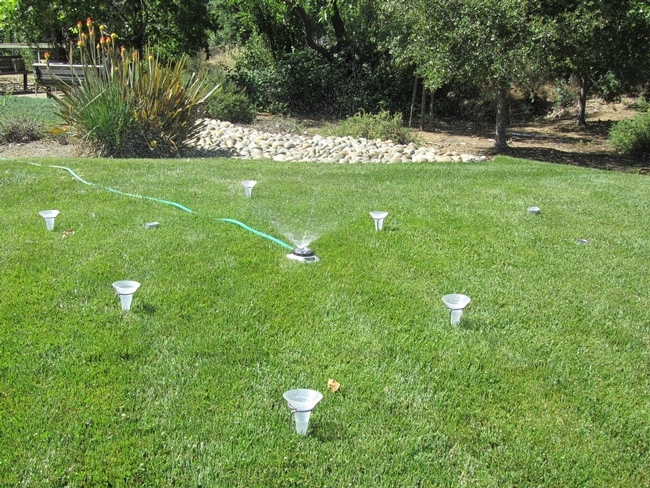
Posts Tagged: Water Conservation
Drought tips available for farmers
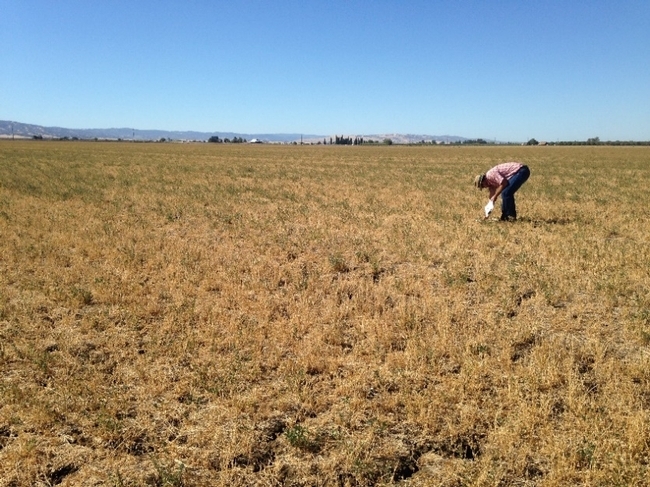
To help farmers make the best use of the water they have available, a series of new and updated drought tips fact sheets has been developed by UC ANR scientists and funded by the California Department of Water Resources.
“These drought tips provide irrigation management recommendations for a broad range of agricultural crops and under different water supply conditions,” said Daniele Zaccaria, UC ANR Cooperative Extension agricultural water management specialist at UC Davis and major organizer of the drought tip series. “The information in these tips will be of practical use for growers and other water-related stakeholders now and into the future as our agricultural community continues to adapt to climate variability and to a changing water supply situation.”
UC ANR scientists have identified best management practices for a wide range of annual and permanent crops and irrigation systems and methods during the drought. In the drought tips series, they also give advice for managing soil salinity and using shallow groundwater for irrigating crops. For beef cattle, they provide recommendations for culling herds and feeding to supplement grazing.
The following drought tips are currently available for free download at http://ucanr.edu/drought-tips:
- Drought strategies for alfalfa
- Drought management for California almonds
- Use of shallow groundwater for crop production
- Drought strategies for walnuts
- Fog contribution to crop water use
- Reclaiming Saline, Sodic and Saline-Sodic Soils

Decades of UC ANR research underlie the information contained in the drought tips. In the 1970s and again in the 1990s, UC ANR partnered with DWR to develop a series of drought management fact sheets.
“DWR has worked with UC ANR to update the drought tips and make sure the latest and best information on water management is available to growers,” said Peter Brostrom, DWR Water Use Efficiency Section Manager.
The California Institute for Water Resources, which coordinates water-related research and extension education across the 10 UC campuses and UCANR, has the drought tips and more drought resources online at http://ciwr.ucanr.edu.
“Even if El Niño brings rain this fall, water scarcity will continue to impact California farmers,” said Doug Parker, director of UC ANR's California Institute for Water Resources. “As climate change continues to reduce the average annual snowpack, it is likely that droughts in California will become more frequent and severe in the years to come.”
UC ANR's California Institute for Water Resources and the California Department of Water Resources also offer drought-related information in a series of videos. Water experts from UC and other agencies and institutions have recorded presentations on high-priority drought topics. Currently 38 videos can be accessed for free on computers and mobile devices at http://ucanr.edu/insights.
UC Agriculture and Natural Resources researchers and educators draw on local expertise to conduct agricultural, environmental, economic, youth development and nutrition research that helps California thrive. Learn more at ucanr.edu
Human behavior patterns influence water conservation
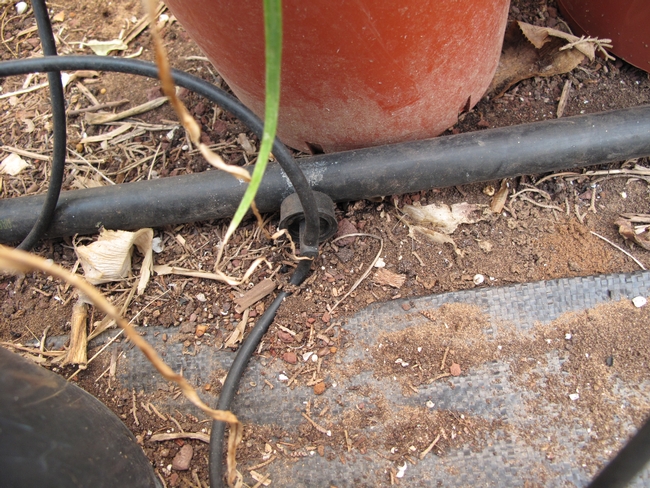
"There is a lot of collective action involved in getting individuals and farmers and water districts to come together to reduce water use," said Lubell, who is also Director of the Center for Environmental Policy and Behavior at UC Davis.
Lubell, whose research focuses on human behavior and the role of governance institutions in solving environmental collective action problems and facilitating cooperation, is particularly interested in watching the conservation efforts prompted by the California drought unfold. "It is definitely a good lab to study cooperation problems or observe them in action," he said.
The difficulty for California is akin to the classic "tragedy of the commons," in which people behave in their own self-interest even when contrary to the best interests of a whole group.
"People are being asked to make an individual sacrifice, but the costs and benefits are experienced by a lot of other people," Lubell said. "People tend to not do the behaviors that make everybody collectively better off."
The solution, Lubell said, is taking a multifaceted approach to encouraging water conservation, including water prices, penalties for not conserving, and influencing social norms. He said social norms are crucial, but they are not established overnight. And the norms can change again when conditions change.
"There will be some behaviors that stick. Some people might put in some irrigation changes where they won't go back and put lawn back in right away," Lubell said. "But short term changes will unstick once it starts raining again. We know the psychology of water use, and people very quickly forget the drier years."
Composting and Water Conservation

To the many benefits of composting, add another: water conservation. When compost is added to bare soils as a thin layer, it is an effective barrier against evaporation of soil moisture, a practice called top- or side-dressing. Compost also reduces plants' needs for water by increasing how much water can be held by the soil - only a 5% increase in organic material quadruples the soil's water holding capacity.1
[A] 2000 study … found that increasing the water holding capacity of the soil by adding compost helped all crops during summer droughts by reducing periods of water stress. The amount of water in … 8 inches … of the compost amended soil increased to 1.9 inches compared with 1.3 inches in un-amended soil. Since vegetables require 1 inch of water a week, at field capacity, the compost amended soil held a 2-week supply of water.2
Compost is the result of a process whereby a large volume of organic matter is rapidly decomposed into a smaller volume that is then used to amend the soil. Soil particles occur in aggregates or clumps, unless they have a high amount of sand particles that do not hold together well. Soil structure refers to the arrangement of sand, silt and clay particles into larger aggregates.3 One can assess the soil structure for their home or community garden by doing the soil-ribbon test and the soils-sedimentation test. This video from Kansas State University tells you how to assess your soil texture by feel. The bottom line is that amending the soil with compost improves its structure, which significantly affects how well it holds water.
Compost is decomposed organic matter that has stabilized, yet, still continues decomposing, though, at a slower rate. The organisms that break down organic matter release glue-like substances that bind soil particles into crumbly aggregates. These irregularly shaped aggregates have air-spaces between them and can be penetrated and occupied by water, nutrients, and plants' roots. Soils rich in organic material have a sponge-like quality that holds water and, thus, plants growing in them have lower water needs.4 In sandy soils with poor water retention, compost improves the soil's water holding capacity by improving soil structure ie., aggregate stability.
Unlike sandy soils, clay soils are characterized by small spaces between the small clay particles. Clay soils have good water retention capacity, however, the spaces in between the particles can fill with water quickly, excluding oxygen and nutrients, and, essentially, drowning the plants. Water saturation in clay soils may also cause soil runoff because those soils cannot hold more water, but, adding compost aerates clay soils and increases its capacity to hold water, oxygen, and nutrients needed for healthy plant growth.
Ultimately, regularly amending with compost lightens clay soils, thus, reducing run-off, and increases the water holding capacity of sandy soils, hence, reducing the need for water. Adding compost as a thin mulch layer over bare soils reduces water evaporation, while also reducing the need for water by garden and farm raised plants. Top-dressing with compost in combination with a thin top-layer of straw mulch in food-growing areas, or a thin woodchip mulch in ornamental garden areas, can reduce plants' water needs around their roots even more, where water is needed the most.
1 Compost Fundamentals, Compost Benefits and Uses. Washington State University, Whatcom County Extension. Accessed on 28 January 2015.
2 M. Charles Gould. Compost increases the water holding capacity of droughty soils. Michigan State University Extension. Accessed on 28 January 2015.
3 Dennis R. Pittenger, ed., California Master Gardener Handbook (University of California Agriculture and Natural Resources, 2002), 36.
4 For the Gardener: Building Fertile Soil. Center for Agroecology and Sustainable Food Systems, University of California, Santa Cruz (Santa Cruz, CA: University of California, no date provided).
July's high evapotranspiration rates trigger conservation efforts
The Water Conservation Act of 2009, also referred to as Senate Bill x7-7 or “20 by 2020,” mandates that California reduce urban per capita water use by 20 percent by the year 2020. It also requires all water suppliers to increase water use efficiency.

To help us become more aware of our watering practices, July is designated as Smart Irrigation Month by the national Irrigation Association. July is the month across most of North America when evapotranspiration rates are highest. The Irrigation Association uses the phrase “saved water is money in the bank” to draw attention to the need to water landscapes and gardens, golf courses and shopping center plantings more efficiently.
In a presentation in Groveland, Calif., Brad Lancaster, the author of “Rainwater Harvesting for Drylands and Beyond” asked the question, “Why do we use treated drinking water to irrigate our lawns?” The number one use of energy in California is to pump and move water.
Many of us in UC Cooperative Extension outreach are asked over and over during the hot, inland California summers: “How much should I water?” Although there are simple rules of thumb, the answer is, “It depends.” Effective irrigation depends on type of soil, slope, elevation, type of plants, where the plant is growing, etc.
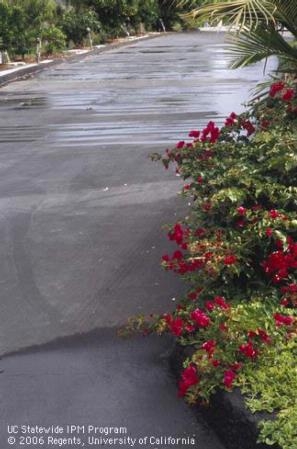
In addition to efficient irrigation scheduling, there are some fairly simple (and some not-so-simple) techniques that can help reduce outdoor residential water use:
- Check watering depth. A long screwdriver blade will penetrate easily into damp soil. Use it to gauge how deeply water is penetrating.
- Add organic material to the soil. Compost, homemade or purchased, helps clay soils drain and helps sandy soils retain moisture. Compost also reduces water demands, helps control soil erosion, and reduces plant stress from drought.
- To combat evaporation, plant closely enough that plants shade the soil.
- Mulch, mulch, mulch, mulch to slow evaporation from the soil surface.
- The amount of water needed varies by species of plant, the time of year, the amount of sunlight, air temperature, etc. The general rule of thumb is that turf grasses use up to about a quarter inch of water per day during the hottest part of the summer. To replace that almost two inches of water per week, divide the amount of water needed into one to three irrigations per week.
- Consider replacing some plantings with drought-tolerant natives.
- Consider reducing lawn size.
- Check sprinklers for leaks, broken heads, misaligned spray patterns and run-off.
- If water is running off, “cycle” irrigation. Run sprinklers until run-off appears, stop until water infiltrates, and repeat until deep irrigation is achieved.
For more information, see the UC Guide to Healthy Lawns.
Agricultural water conservation — a serious look
With this latest set of storms replenishing California’s snowpack and water levels in reservoirs, rivers and streams, it may be hard to think about water conservation issues. But this is a still a semi-arid state, so it is always prudent to prepare for droughts.
So where can we save the most water? Farming in California depends on irrigation, so agriculture seems the largest potential source for cost-effective water savings in the state. Although agriculture’s share has been declining, it still accounts for roughly 75 percent of all human water use, compared to 25 percent for urban uses.
The recent book, Managing California’s Water: From Conflict to Reconciliation, examines agricultural water conservation extensively and points out the complexity of this issue. The book’s findings are based on scientific and economic research and field experience in California and worldwide.
Much agricultural water is still devoted to relatively low-value crops: In 2005, over 60 percent of “net” water use in the agricultural sector – the amount consumed by crops – was for irrigation of pasture and field crops such as alfalfa, corn, rice, and cotton, which generated only 14 percent of crop revenues. These statistics imply significant potential for reducing farm water use without incurring overwhelming consequences for the state’s economy.
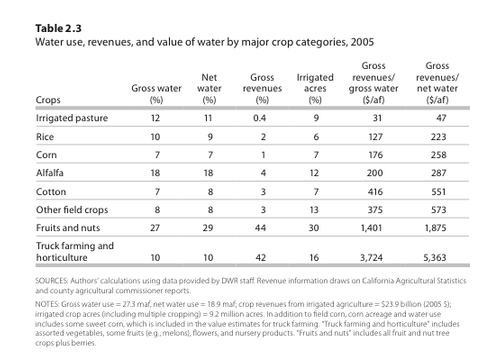
Contrary to popular understanding, however, improving on-farm irrigation efficiency is usually a poor way to achieve real agricultural water savings. Real conservation usually requires shifting to crops that use less water or reducing crop production, such as by fallowing farmland. This is because much of the irrigation water applied when farmers use “inefficient” techniques like furrow irrigation is returned to streams or aquifers, where it becomes available for reuse.
This is the international scientific consensus on irrigation conservation, from studies worldwide. Most groundwater recharge in California’s Central Valley is from irrigation runoff and percolation. This recharge helps to replenish depleted aquifers and serves as a significant source of supply during drought. Only a few areas in California, such as the Imperial Valley, can save large amounts of water by adopting more efficient irrigation techniques. In such areas, the excess irrigation water flows into saline water bodies or contaminated aquifers, where it is unavailable for reuse, so reducing runoff generates real water savings.

Even though improving irrigation efficiency usually does not produce significant real water savings, it can provide economic benefits for farmers. Farmers usually pay for the amount of water they apply to their fields, not the amount consumed by crops. When farmers face limited supplies, they often have an incentive to adopt more efficient techniques, such as drip irrigation, to make use of every possible drop on their farms.
These techniques, often combined with laser leveling of fields and more precise doses of fertilizers and pesticides, can improve crop productivity and quality. In recent decades, many San Joaquin Valley farmers have made such changes, which have enabled them to plant greater acreages of higher-value fruit, nut and vegetable crops.
Improving irrigation efficiency also can provide environmental benefits. For instance, agricultural runoff sometimes contains harmful salts and other chemicals, and more efficient irrigation can help reduce these discharges. This is another reason for the rise in more efficient irrigation techniques on the west side of the San Joaquin Valley, where farmers are required to limit runoff of selenium, a toxin to wildlife. Similarly, by reducing diversions, irrigation efficiency may allow higher streamflows on particular stretches of rivers, improving conditions for aquatic life.
Although counterintuitive, more efficient irrigation techniques also can increase water consumption. By allowing farmers to farm their fields more intensively and to expand irrigated acreage with the water they “save,” techniques like drip irrigation can increase net farm water use within a region, thereby reducing groundwater recharge and nearby streamflow. Conservation-oriented policies that neglect this possibility can exacerbate groundwater overdraft, as studies from New Mexico to Yemen have shown.
What is the right policy to encourage effective agricultural water conservation? It depends on the objective. To encourage real water savings, the best policy is to let market forces work. Water markets are a flexible and efficient way to encourage farmers to create real water savings for higher-valued uses. California needs to improve the ability to buy and sell water, by reducing state and local barriers, to give farmers better price signals. To reduce polluted agricultural runoff or improve streamflows in some areas, the best policy is to adopt regulations that directly address pollution discharges and instream flows, and allow farmers to choose the most cost-effective way to meet these requirements.
In contrast, policies that impose particular irrigation technologies, or even ban specific crops, are likely to impose higher costs on farmers and society, while failing to save real water. Given the immense variety and variability of conditions in California, rigid regulatory policies to promote agricultural water conservation seem more likely to create more controversy and increased social cost than usable water savings.
Agricultural water conservation is an important part of California’s water future. But simplistic notions of water conservation threaten to mislead California’s water policy debates by presenting the false claim that water saved from on-farm use is necessarily water saved to the system. It is time to take water conservation seriously. In doing so, we also must undertake water conservation scientifically, rather than rhetorically.
(This post is excerpted from the California WaterBlog—“Taking Agricultural Conservation Seriously”.)

